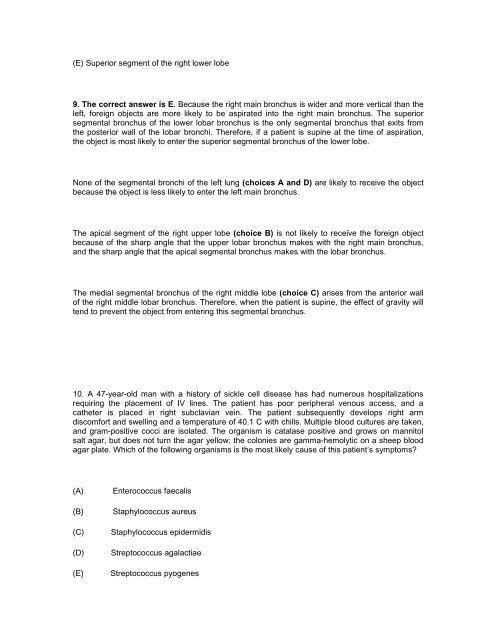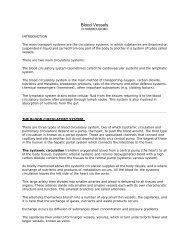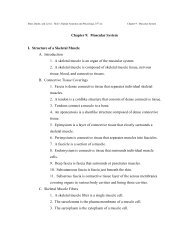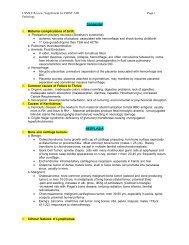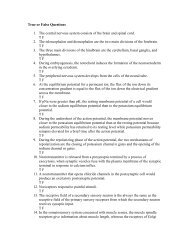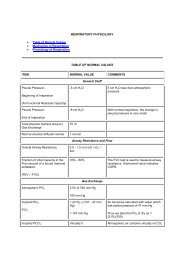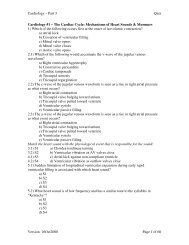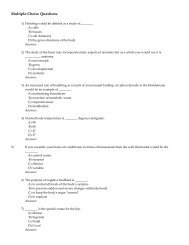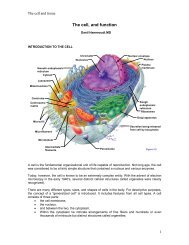L:\usmle review 7 - Sinoe medical homepage.
L:\usmle review 7 - Sinoe medical homepage.
L:\usmle review 7 - Sinoe medical homepage.
You also want an ePaper? Increase the reach of your titles
YUMPU automatically turns print PDFs into web optimized ePapers that Google loves.
(E) Superior segment of the right lower lobe<br />
9. The correct answer is E. Because the right main bronchus is wider and more vertical than the<br />
left, foreign objects are more likely to be aspirated into the right main bronchus. The superior<br />
segmental bronchus of the lower lobar bronchus is the only segmental bronchus that exits from<br />
the posterior wall of the lobar bronchi. Therefore, if a patient is supine at the time of aspiration,<br />
the object is most likely to enter the superior segmental bronchus of the lower lobe.<br />
None of the segmental bronchi of the left lung (choices A and D) are likely to receive the object<br />
because the object is less likely to enter the left main bronchus.<br />
The apical segment of the right upper lobe (choice B) is not likely to receive the foreign object<br />
because of the sharp angle that the upper lobar bronchus makes with the right main bronchus,<br />
and the sharp angle that the apical segmental bronchus makes with the lobar bronchus.<br />
The medial segmental bronchus of the right middle lobe (choice C) arises from the anterior wall<br />
of the right middle lobar bronchus. Therefore, when the patient is supine, the effect of gravity will<br />
tend to prevent the object from entering this segmental bronchus.<br />
10. A 47-year-old man with a history of sickle cell disease has had numerous hospitalizations<br />
requiring the placement of IV lines. The patient has poor peripheral venous access, and a<br />
catheter is placed in right subclavian vein. The patient subsequently develops right arm<br />
discomfort and swelling and a temperature of 40.1 C with chills. Multiple blood cultures are taken,<br />
and gram-positive cocci are isolated. The organism is catalase positive and grows on mannitol<br />
salt agar, but does not turn the agar yellow; the colonies are gamma-hemolytic on a sheep blood<br />
agar plate. Which of the following organisms is the most likely cause of this patient’s symptoms<br />
(A)<br />
(B)<br />
(C)<br />
(D)<br />
(E)<br />
Enterococcus faecalis<br />
Staphylococcus aureus<br />
Staphylococcus epidermidis<br />
Streptococcus agalactiae<br />
Streptococcus pyogenes


